Week 1
Introduction:
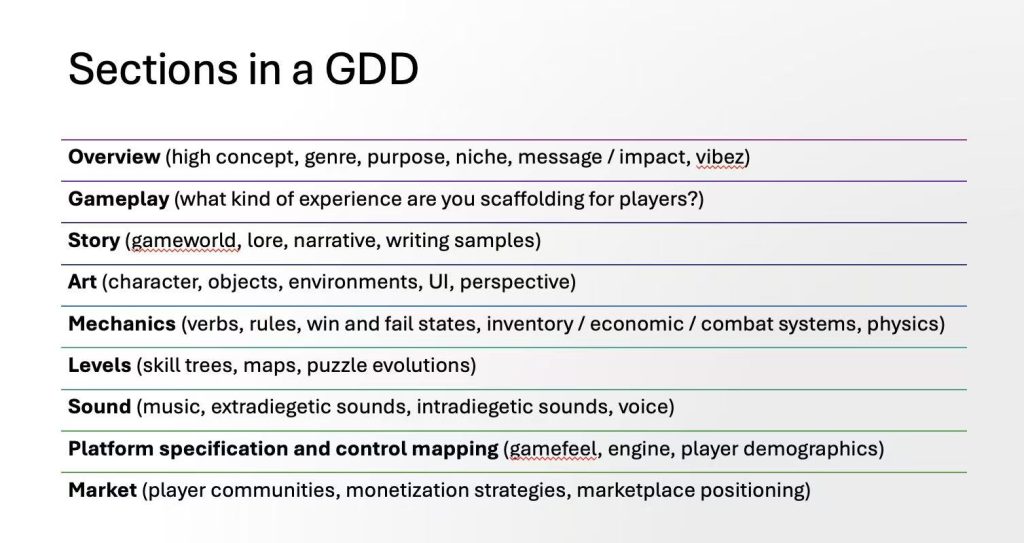
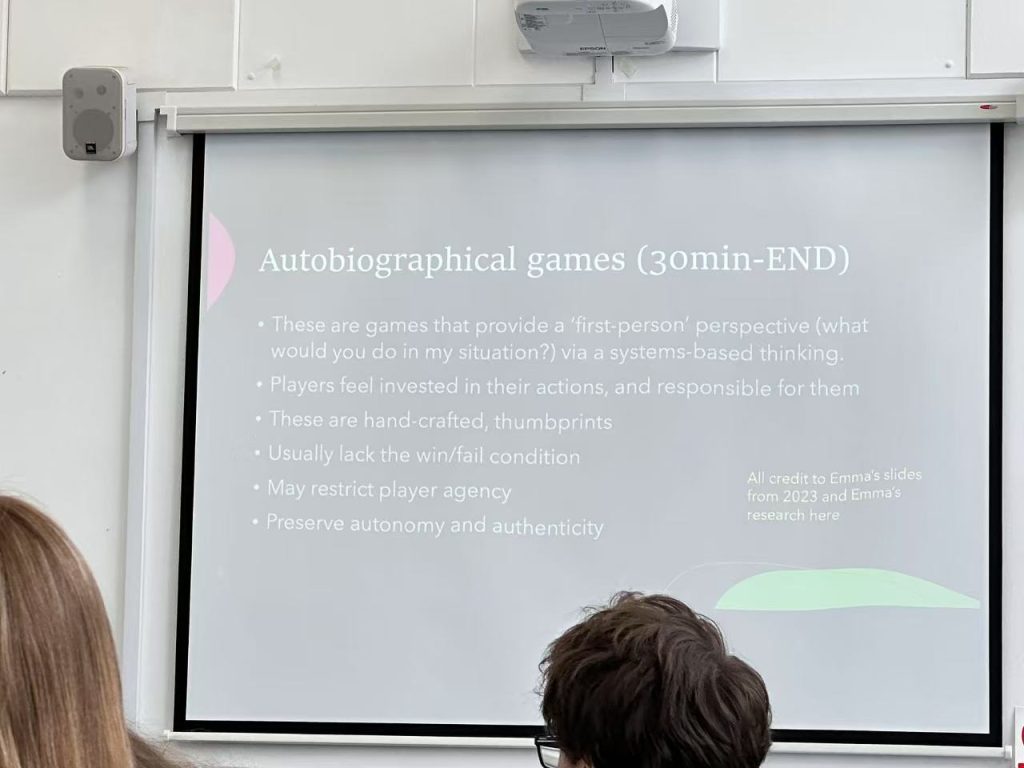
This week, we mainly introduced and understood the basic elements of GDD, what parts it consists of, the factors it includes and creative generation techniques. We did brainstorming on our own topics. I first spent a long time determining my game theme, which was not yet determined at the time. At that time, it was just a matter of conceiving around some small games. I think the game theme is the key to the whole GDD.
Week 2
Game Spaces and World Building
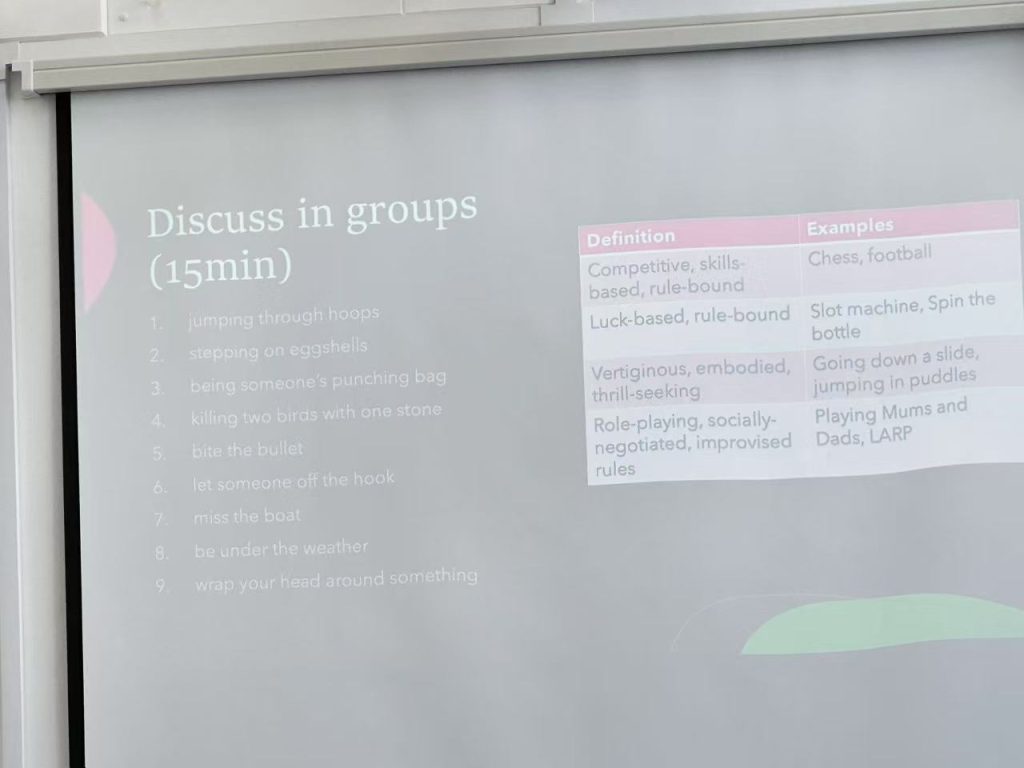
This week we continued to focus on the theme and idea of a game, and discussed what is needed to build a game world. We also generated new ideas for conceiving a game through group discussion activities.
At that time, I already had a general idea for my game theme, and narrative games were my main goal.
Week 3
Concept Art
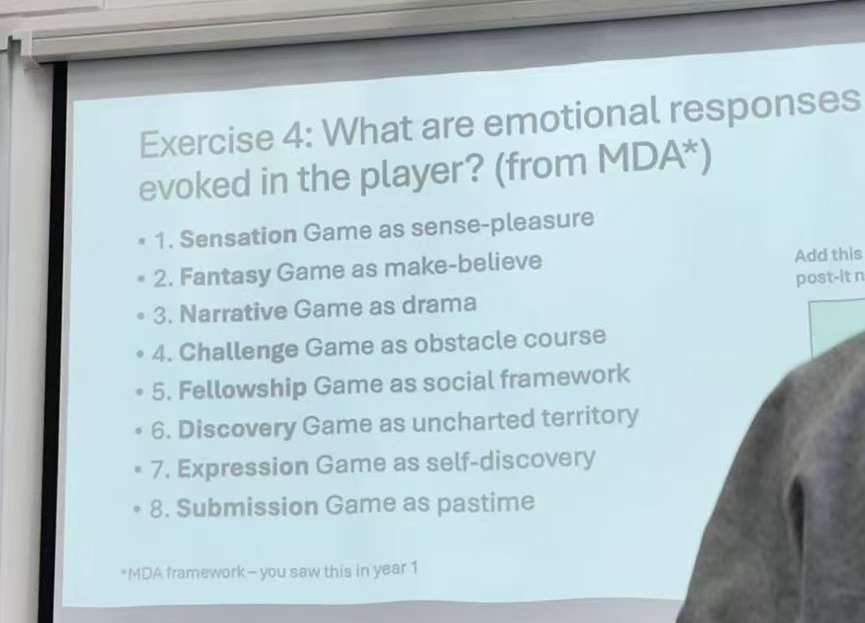
This week we started to refine our game themes, and most people have already decided on their themes. We also used post-it notes to display our ideas and communicate with each other. At the moment, I have a general idea of the direction of my game. I want to make a game about future technology. Since my game is a narrative game, it is imperative to conceive the story of my game at that time.
Week 4
Character Design
This week we started to learn about character design and realised the importance of a good character to a game. We went from having no idea to slowly developing ideas for the characters in our games. I started to think about what kind of character I would like to appear in my game, their personality, appearance, and background.
Week 5
Narrative
This week we started to study the narrative of games. Telling a good story is crucial and is the soul of a game. So I listened very attentively this week, because my games are mainly narrative games, and this will be very helpful to me. Originally, my conception of my game was limited to a simple narrative, but then I added a lot of details to make the plot flow more smoothly.
Week 6
Game Play and Game Systems
This week, we will mainly study the gameplay of the game. If the plot of a game is its soul, then the gameplay is its body. Good gameplay can attract more players. At first, my concept of gameplay for this game was just to tell a good story, a kind of playable movie. But after I studied it in depth, I found that if I just wanted to express a story, then the player would find it increasingly boring. So I added a lot of gameplay to support the individual plots; I added plot choices that could lead to different endings, and added tasks such as character upgrades and collecting items to make the gameplay more attractive.
Week 7
Formative Feedback
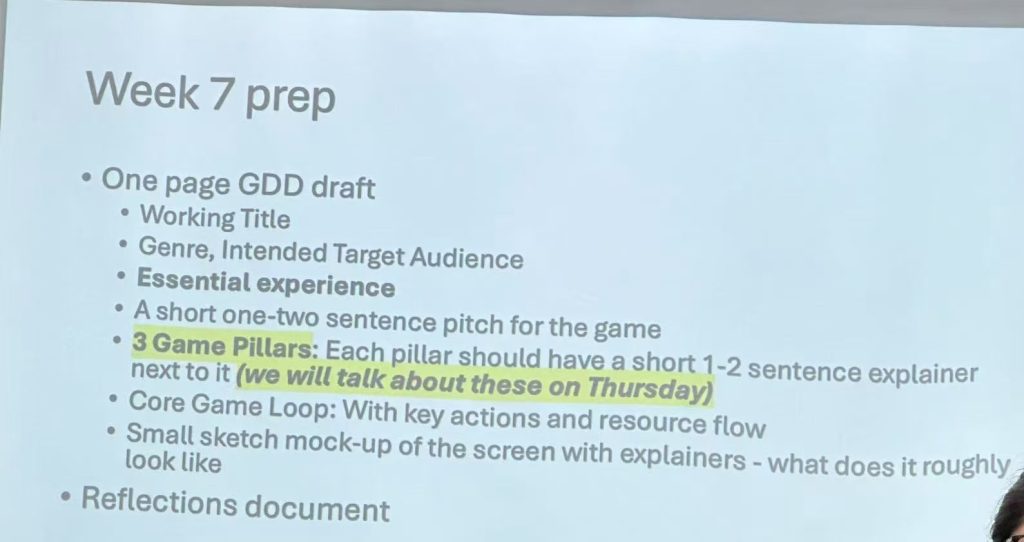
This week our teacher checked everyone’s GDD, and I think I benefited a lot from the feedback this week. I learned a lot about what I can still improve and what I’m still missing.
Week 8
Audio
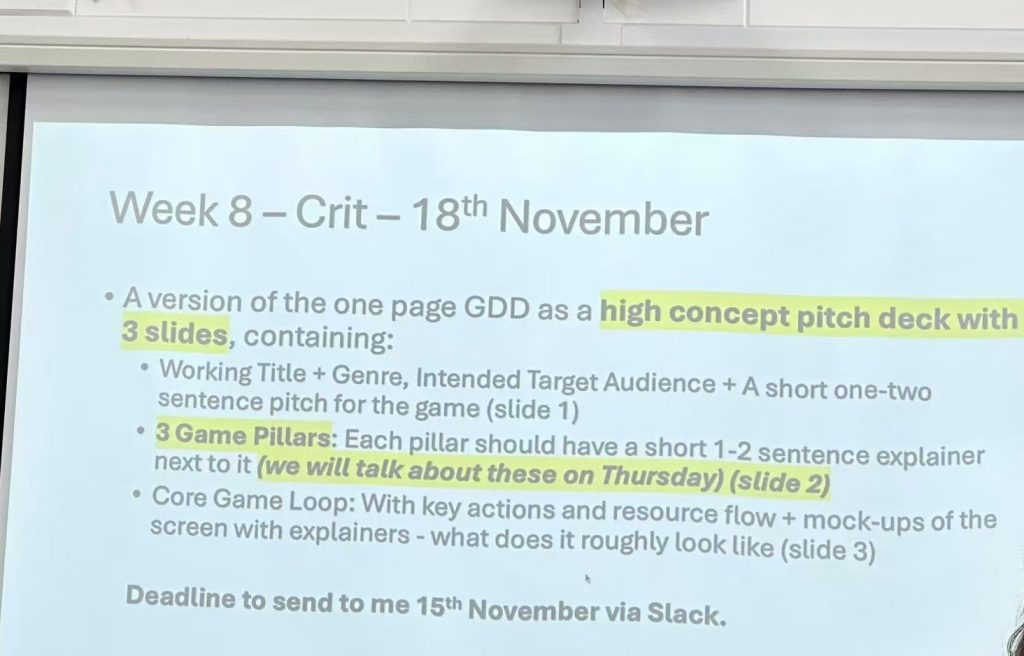
This week we’ll start talking about music in games. Music can often make a good game even better. I’ve played some games with space or sci-fi themes, and I have a general idea of the kind of background music you’d expect to hear in those kinds of games. I think the music in my game should be varied, sometimes calm, sometimes exciting. I want the audience to be amazed by the plot as they discover new things. So I think the music in my game will be more mysterious or shocking.
Week 9
Interaction, controllers, UX, usability
This week we started working on the user interface. A good UI can have a big impact on a game. I don’t think my UI needs to be too complicated, as the main focus is on the narrative. Most of it will be up to the player to figure out, as the game is not intended to come with a map or too many hints. And I want it to work on all platforms.